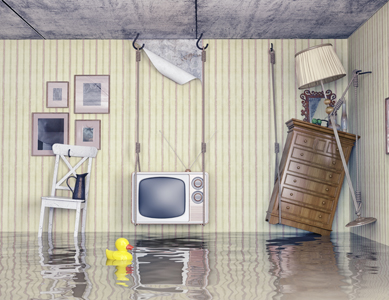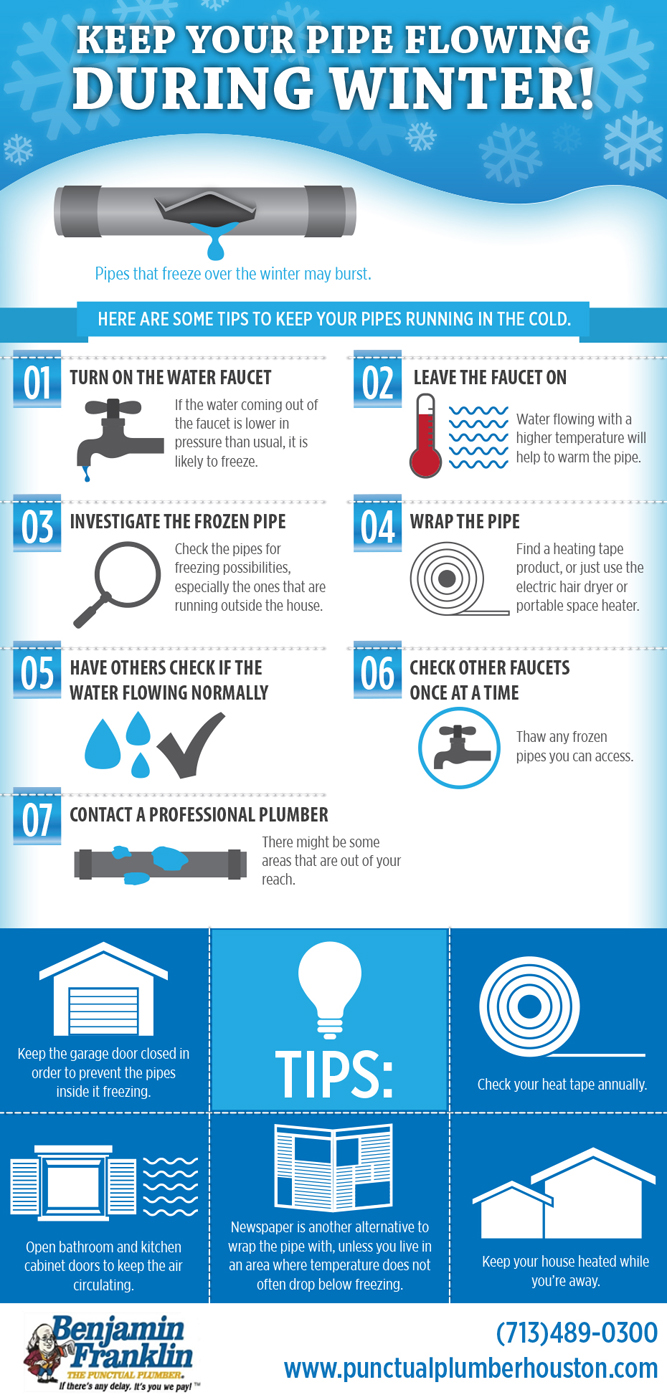Why Do Chicago Homes Flood In The Winter?

Why Do Homes Flood In The Winter?
Most people associate flooding with the spring thaw and excess rain in the summer.
However, did you know that flooding is common in the winter.
One of the primary causes of flooding in the winter is caused by frozen pipes that burst.
The purpose of this article is to explain how to prevent your pipes from freezing and most importantly, explain the the top three actions you must take if you do face a flooding situation.
Preventing Frozen Pipes Infographic
The infographic below, courtesy of the Punctual Plumber in Houston, shows you what you need to do to prevent pipes from freezing in your home during the winter. Excellent tips. Proactive action can save you lots of time and headaches, so review the infographic carefully.

Preventing Frozen Pipes Infographic
Mold Is The Core Problem You Want to Prevent
All life, including plants, animals, and humans are composed of cells. In order for the cells to survive they require water; water is the giver of life, without it we can not survive.
Unfortunately, water can also be a very destructive force causing extensive damage to property and potentially disease and sickness if the water is category 2 or 3. You need to act immediately when your house is flooded, to minimize the health concerns caused by category 2 and 3 water, but also to minimize the health and structural impact that mold can have on your property.
Mold is a fungus. Unlike plants that derive food from chlorophyll and the process of photosynthesis, mold requires water to thrive and will begin to grow rapidly within 24 to 48 hours of a flood. The three life forces for mold include the following:
1. A food source, which includes materials high in cellulose content such as paper, wood, drywall, wallpaper, carpet, ceiling tiles, dust, and dirt. Notice, this is what most homes are made of.
2. The ideal temperature which ranges from 41 to 100.4 degrees Fahrenheit.
3. Most importantly, water, because mold needs this for its cells to function properly. Without water and moisture, mold will not grow.
Mold has a purpose in our ecosystem, ie. it breaks down dead organic matter. In fact, we inhale mold spores every day when we are outside and most people don’t usually have health issues because the concentration of spores is not that high. The primary reason that mold becomes an issue in homes rests with the fact that the spore count increases to levels that cause sickness and this is the number one reason you want to prevent mold growth in your home. When you consider the purpose of mold in our ecosystem, it is not too surprising that mold is a health hazard.
Some people do not get sick from mold or may not even realize they are sick and don’t pay much attention to mold if they have it growing in their home. Don’t ignore the problem! Long term exposure to mold will have health consequences. If you do not pay attention to the health consequences, then keep in mind that mold is like a parasite or cancer and will continue to feed on your home until it is removed. In short, once mold begins to grow, it will continue to feed leading to structural concerns caused by rotting wood, potentially causing foundations to buckle, roofs to collapse, and other structural issues. To save your property value, remediate the mold and bear in mind that mold removal can be costly, so to minimize cost, address the problem as soon as possible.
Now that you understand why mold is such a huge concern when flooding occurs, here are the three steps you must take.
#1 Shut Off Breaker In Flooded Areas
To avoid electrical shocks, you need to shut off the breakers in the flooded areas and contact your electrical utility if you need further assistance.
Furthermore, if you plan to begin some of the clean up process yourself, be safe and use rubber gloves, boots, protective clothing, and a respirator.
#2 Call A Restoration Contractor That Understands Flood Restoration
Call The CleanUp Guys right away so that we can begin the clean up process and start pumping water out. We have the experience, protective gear and equipment to clean up the area properly. Don?t wait!
Our main objective is to get the water out so that we can begin the process of drying the area with air movers and dehumidifiers. As outlined above, mold needs water, so our number one objective is to remove the water and begin the drying process first to minimize mold proliferation and then begin the clean up process.
#3 Contact Your Insurance Company and Get Your Claim Process Started
Dealing with a flooding disaster can be very stressful and overwhelming. To ensure that your property is restored to pre-flooding condition, contact your insurance company immediately so that they can begin the claim process and coordinate the work with the restoration contractor you hire. Keep in mind, as the customer you have the right to choose any restoration contractor you want to work with!
The CleanUp Guys are here to help, Call us, (773) 885-8528, or send us an e-mail if you need assistance. We look forward to serving you. 🙂
3 Tips To Minimize Winter Flood Damage: Why Do Homes Flood In The Winter? Most people associate flooding with the spring…
Posted by The CleanUP Guys, Inc on?Monday, February 22, 2016
[/et_pb_text][/et_pb_column][/et_pb_row][/et_pb_section]3 Tips To Minimize Winter #Flood Damage In #Chicago, Illinois https://t.co/7YVpYPgtuv PLEASE RETWEET pic.twitter.com/KgrSiT5eD7
? The CleanUP Guys (@TheCleanUpGuys) February 22, 2016
